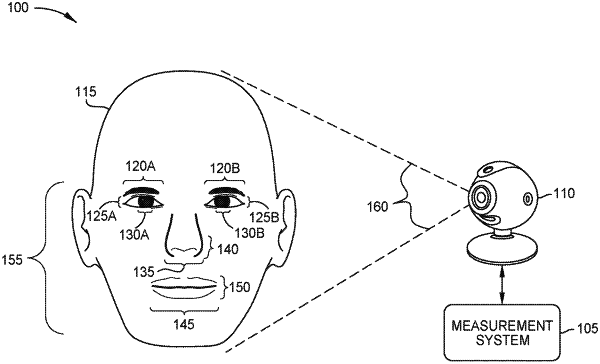| CPC G06V 40/169 (2022.01) [G06N 20/00 (2019.01); G06T 7/11 (2017.01); G06T 7/13 (2017.01); G06V 10/242 (2022.01); G06V 40/171 (2022.01); G06V 40/173 (2022.01); G06V 40/19 (2022.01)] | 11 Claims |

|
1. A method, comprising:
identifying a set of images, from a plurality of images captured by an imaging sensor, that satisfy defined orientation criteria, comprising, for each respective image in the set of images:
extracting, by processing the respective image using one or more landmark-detection machine learning models, a respective set of coordinate locations for a set of facial landmarks on a face of a user depicted in the respective image; and
determining a respective orientation of the face of the user depicted in the respective image based on the respective set of coordinate locations for the set of facial landmarks, wherein at least one image of the plurality of images is discarded for failing to satisfy the defined orientation criteria;
determining that one or more impedance conditions are not present in the set of images;
estimating a reference distance on the face of the user based on a first image of the set of images, wherein the first image depicts the user facing towards the imaging sensor and the reference distance indicates an absolute measurement of at least one of the set of facial landmarks;
estimating a nose depth of the user based on a second image of the set of images based at least in part on the reference distance, wherein the second image depicts the user facing at a predefined angle relative to the imaging sensor; and
selecting a facial mask for the user based at least in part on the nose depth.
|